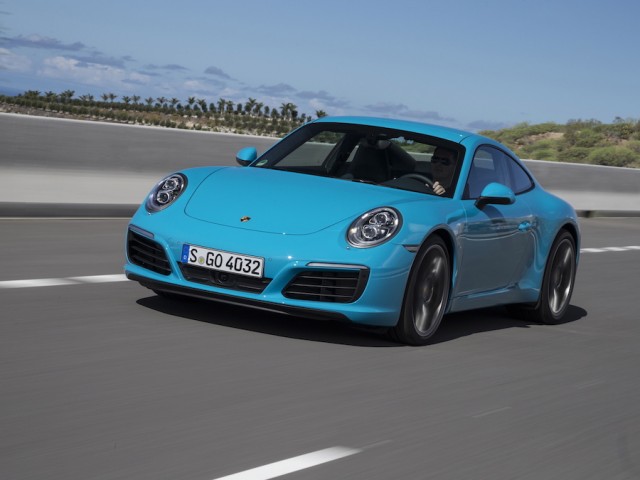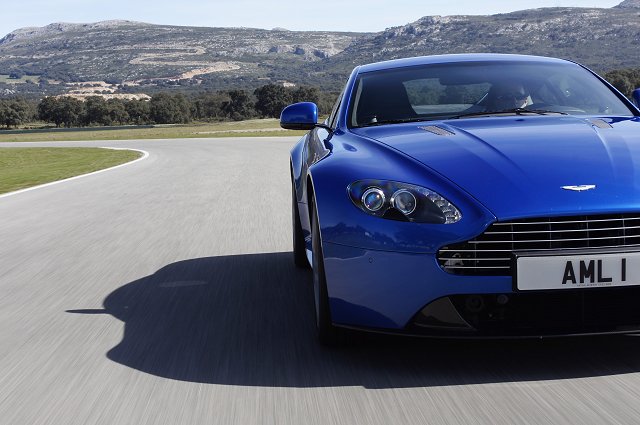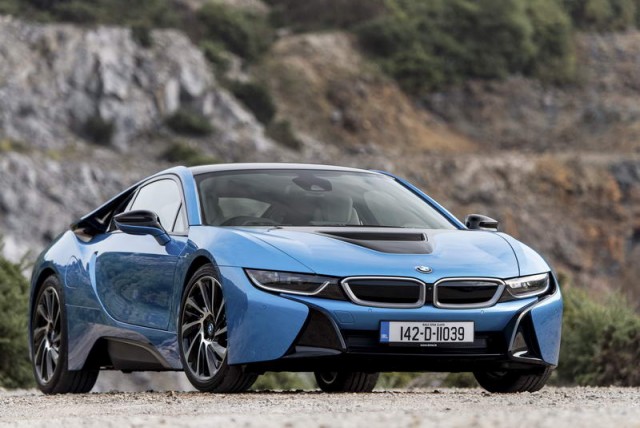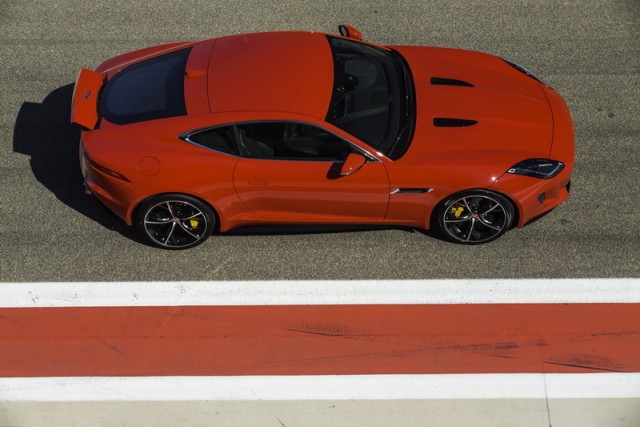More power and greater efficiency from a new turbocharged flat-six engine define an updated Porsche 911 Carrera range. The Gen II 991-series 911 is an evolutionary leap for Porsche's enduring and hugely successful sports car. Here we review the Carrera S variant.
In the metal
There's nothing radical to see on the outside of the new 911, as you'd expect from Porsche. The key changes are under the engine cover, more of which later. The styling updates outside are shaped by those rather than any real need to change the enduring shape of Porsche's iconic sports car. The engines in both the Carrera and Carrera S are now turbocharged, the result being new air intakes at the front (within which nestle some active vanes that open and close to improve efficiency) housed in a re-profiled bumper. The headlights feature new technology too, even though physically they're the same shape; they contain Porsche's now signature four-point daytime driving lights within them. New door handles (yes, really) and a re-profiled rear bumper with vents low down aft of the rear wheels to allow hot air to escape from the intercoolers are also to be found, while a new engine deck lid with vertical strakes directs cooling and induction air into the engine and those intercoolers.
The updates inside are similarly modest, and the result of more functionality. There's a new touchscreen in the centre, it bringing significant improvements in connectivity and usability, while there's a new 918 Spyder-derived steering wheel, which comes additionally with a 'mode switch' (more a knob in reality) if you opt for Sport Chrono. It's a neater, easier to use cabin, which retains the 911's characteristic usefulness and space that's fairly unique in the sports car class.
Driving it
The Porsche 911 line-up has never been anything but expansive, the Carrera and Carrera S models available in Coupé and Cabriolet guises, with manual or PDK automatic gearboxes. The launch cars for the update are all rear-wheel drive, but the Carrera 4 and 4S will follow soon, as will a Targa. Factor in the myriad of options and picking the perfect 911 is something of a lottery. You might need a winning ticket too if you're careless with the box ticking - the car sampled on the launch added about a quarter again to its list price, for example. As tested it featured PDCC (Porsche Dynamic Chassis Control), PCCB (Porsche Carbon Ceramic Brakes), rear-wheel steer, sports chassis, Sport Chrono, lightweight bucket seats and a sports exhaust. We'd say all but the sports exhaust and rear-wheel steer are necessary, the remainder merely desirable.
With a switch from naturally aspirated 3.8-litre flat-six power to a twin-turbo 3.0-litre unit the fear was of a 911 Carrera silenced by its forced induction. That's simply not the case; firing up the engine for the first time reveals a familiar characteristic flat-six soundtrack, slightly muted in its tone, but far from lacking in charisma. It's free-revving too, with throttle response that's not obviously turbocharged, even if it undeniably lacks the free-revving immediacy of its naturally aspirated predecessor - but it certainly doesn't lack anything in terms of performance. Power is up 20hp (on both the Carrera and Carrera S for 370hp and 420hp respectively), but it's the way the engine produces its torque that defines the new engine.
Peak torque in the S of 500Nm arrives at 1,700rpm and hangs around all the way to 4,000rpm. In the old 911 Carrera S, its 450Nm arrived at 6,500rpm, so it needed revs to produce its best. The turbocharged engine's far more flexible as a result, feeling significantly faster everywhere, even at the top end. Sure, there's not quite the heady appeal - or benefit - of chasing the red paint in the new Carrera S, but it's a decision rather than a necessity. Do so and the engine sounds impressive, if not quite as intoxicating, the notes overlaid by the occasional gasp and chirrup that betrays the 3.0-litre flat-six's forced induction. Add the sports exhaust for the best aural experience, as it crackles on the overrun like a fiercely tapped snare drum and adds some interest as the revs rise, too.
The engine's transformative, then, different, though not so demonstrably so as to rob the 911 of its appeal; you just need to approach it slightly differently. Helping do that is a revised set of gear ratios in both the PDK and manual cars, the fitting of a centrifugal pendulum to both transmissions and a twin-plate clutch to the manual improving shift quality in both. The seven-speed manual's now good enough that the PDK should no longer be considered the default transmission for the 911; its shift is sharper, more precise and the clutch action easier, too. The revisions aren't all welcome though; as part of the Sport Chrono pack with the manual gearbox there are automatic throttle blips on the downshift in Sport and Sport+ modes, which is kind of missing the point if you've opted for a manual in the first place. Best then to leave Sport Chrono off the options, unless of course you've gone PDK and want your Carrera S to manage a 0-100km/h time of 3.9 seconds allied to emissions of just 174g/km. With the manual and no Sport Chrono you'll have to suffer just 4.3 seconds and 199g/km of CO2.
The chassis hasn't been ignored in Porsche's Gen II development, either. All Carreras come with a completely revised adaptive damping system (PASM), the car now sitting lower by 10mm and featuring suspension with tweaked springs, anti-roll bars and damper rates. There's the option of a lower still Sports Chassis and PDCC (Porsche Dynamic Chassis Control), which brings automatically adjusting anti-roll bars, for even greater wheel and body control. It's all to the benefit of the Carrera S's ride, so it's supple enough to cover rough ground with real composure, yet retains the sort of body and roll control that's essential in something so quick. What's genuinely welcome is a return of some feel to the steering, the 991 Gen II's electric power steering as accurate and nicely weighted as ever, yet adding some information at the wheel's rim. The steering wheel itself is smaller too. Specifying Porsche's optional rear-wheel steering - first used on the 911 GT3 and Turbo models - adds markedly to the Carrera S's agility, the nose turning in with real conviction and being hugely resistant to understeer. You'll be doing very well to get anywhere near the 911's limits of traction and grip on the road as they're so high; it's a quite ridiculously capable car at covering ground, and a hugely entertaining one, too.
What you get for your money
It's been a long time since you could walk into a Porsche showroom and simply order a car, pick a colour and, perhaps, pick an optional sports seat. You could lose hours, days even, selecting the right options for your Carrera S, and doing so does ramp up the cost significantly. A Carrera S manual with Sports Chassis, rear-wheel steer and PDCC would suit us just fine, though if money were tight (unlikely if you're buying one) a simple Sports Exhaust and that rear-wheel steer would be on the essentials list. Don't ignore the standard Carrera, either; it's hardly a poor alternative, though start ticking those options and you might as well just start with the S anyway.
Summary
The Porsche 911 has been a massive success because of the German company's ongoing evolution of its core sports car, keeping it relevant. Today there's a squeeze on economy and emissions, and a down-sized turbocharged engine is the response from Porsche. That might upset a few purists, but the benefits the engine brings, not just in terms of economy and emissions, but driveability too, are arguably more relevant more of the time, to a larger portion of 911 customers. It's actually lost little in translation and, thanks to the suspension and transmission improvements, steers, rides and shifts better than its predecessor did, too. There's more equipment inside, more choice of options, but the same old crushing, all-round ability that's a 911 signature. Progress then, and in the right direction, despite the doubters.






































